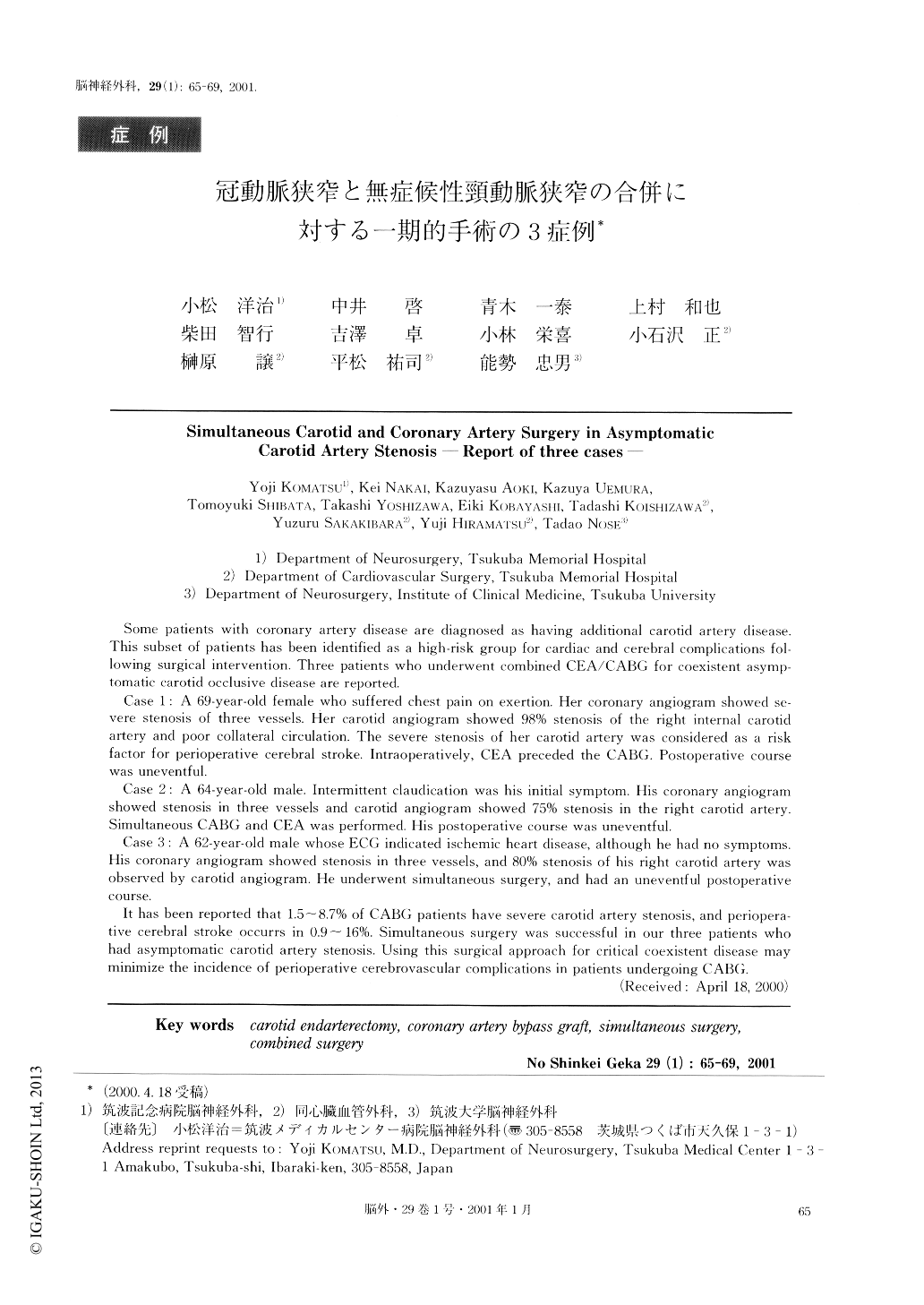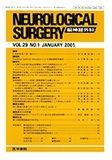Japanese
English
- 有料閲覧
- Abstract 文献概要
- 1ページ目 Look Inside
I.はじめに
頸動脈狭窄病変と冠動脈狭窄病変とは,ともに全身疾患である動脈硬化症の一病像である.したがって,両者はしばしば合併して存在する6,13,14,17).冠動脈の病変は生命の維持に密接に関連するものであり,また内頸動脈の病変は,中枢神経系機能に関連するもので生存の質に関与する.
頸動脈狭窄に対する頸動脈内膜切除手術(Carotid endoarterectomy:CEA),また冠動脈狭窄に対する冠動脈バイパス術(Coronary arterybypass graft:CABG)は,各々確立された治療法であるが24),その適応についてはなお検討が進行中である2,15,23).両病変は,お互いに危険因子であり,両者が合併して存在した場合の治療方法については多くの議論がみられる1,3,6-8,11,15,18,20).この度,冠動脈狭窄症例に合併した無症候性頸動脈狭窄に対して一期的にCEAとCABGを行った3症例を経験したので報告する.
Some patients with coronary artery disease are diagnosed as having additional carotid artery disease. This subset of patients has been identified as a high-risk group for cardiac and cerebral complications fol- lowing surgical intervention. Three patients who underwent combined CEA/CABG for coexistent asymp- tomatic carotid occlusive disease are reported.
Case 1 : A 69-year-old female who suffered chest pain on exertion. Her coronary angiogram showed se- vere stenosis of three vessels. Her carotid angiogram showed 98% stenosis of the right internal carotid artery and poor collateral circulation. The severe stenosis of her carotid artery was considered as a riskfactor for perioperative cerebral stroke. Intraoperatively, CEA preceded the CABG. Postoperative coursewas uneventful.
Case 2: A 64-year-old male. Intermittent claudication was his initial symptom. His coronary angiogramshowed stenosis in three vessels and carotid angiogram showed 75% stenosis in the right carotid artery.Simultaneous CABG and CEA was performed. His postoperative course was uneventful.
Case 3: A 62-year-old male whose ECG indicated ischemic heart disease, although he had no symptoms.His coronary angiogram showed stenosis in three vessels, and 80% stenosis of his right carotid artery wasobserved by carotid angiogram. He underwent simultaneous surgery, and had an uneventful postoperativecourse.
It has been reported that 1.5~8.7% of CABG patients have severe carotid artery stenosis, and periopera-tive cerebral stroke occurrs in 0.9~16%. Simultaneous surgery was successful in our three patients whohad asymptomatic carotid artery stenosis. Using this surgical approach for critical coexistent disease mayminimize the incidence of perioperative cerebrovascular complications in patients undergoing CABG.

Copyright © 2001, Igaku-Shoin Ltd. All rights reserved.


